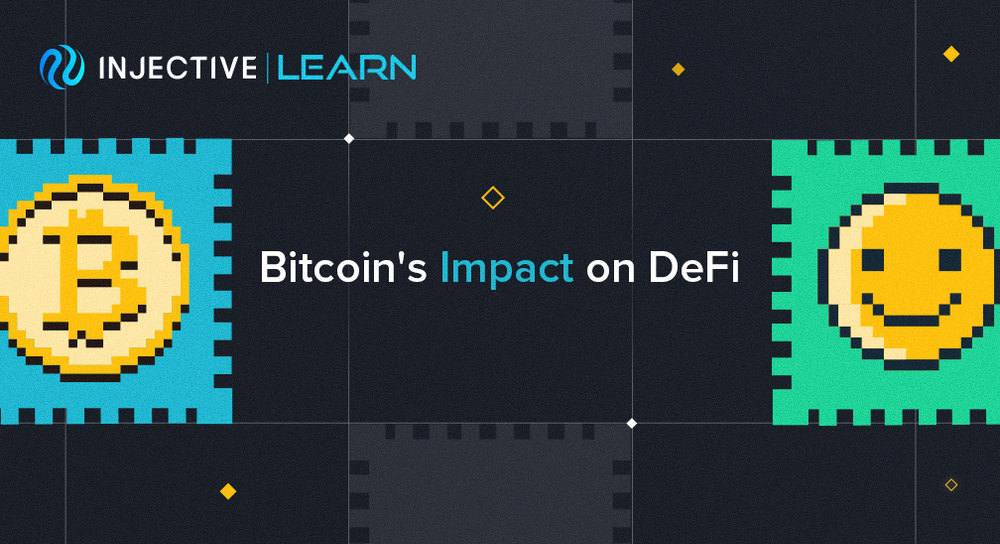For a while there was no decentralized finance (DeFi) or crypto per se, but just Bitcoin. Acknowledged as the first blockchain protocol, Bitcoin allowed for the permissionless transfer of BTC without the need for any middlemen. That in itself was revolutionary, and soon inspired a Cambrian explosion of projects that started to leverage the technology in innovative ways.
Over time a series of new protocols have come to the forefront and given rise to a new paradigm in finance. Widely known as Decentralized Finance, or DeFi, the sector has rapidly attracted large capital flows, even reaching a total market capitalization of ~$130 billion by April 2021.
Since its inception, Bitcoin has always been the crypto industry mover and remains the most capitalized digital asset. As a result, Bitcoin is still the most liquid digital asset to this day. However, during its nascent stage, BTC could not be represented in different blockchains such as Ethereum due to composability (the ability for different chains to plug into each other) friction. Indeed, until cross-chain solutions were made viable, BTC existed solely on the Bitcoin blockchain and the asset could not be leveraged in DeFi protocols.
A growing demand for BTC on Ethereum has stimulated several bridge solutions which minted a wrapped ERC20 version of BTC on Ethereum for every BTC sent to a dedicated address on the Bitcoin network, making it one-to-one backed. This innovative breakthrough of wrapping digital assets allowed BTC to exchange value in the ever-growing DeFi ecosystem. As evident in the chart below, BTC on Ethereum was virtually non-existent prior to mid-2020, while today up to ~1.33% of the entire BTC supply is locked in a tokenized form on Ethereum.
Source: The Block
Wrapped Bitcoin (WBTC) was just the first ‘version’ of BTC on Ethereum, which still undoubtedly makes up the majority of Bitcoin used in DeFi. However, this version of wrapped BTC brought about centralization concerns as the assets were stored with custodians rather than smart contracts. Indeed this did not align with DeFi’s ethos which is based on the principles of decentralization, so the community proposed a series of alternatives. One of the most well-known iterations is renBTC, which tokenizes BTC by interacting directly with a smart contract, versus a custodian address.
The existence of multiple versions of the same asset, like wBTC and renBTC, has created the need for an efficient way to enable swaps between them. This led to innovations in the AMM model with price curves more concentrated around the peg for better capital efficiency, first implemented by Curve Finance and later in Uniswap V3.
Since Bitcoin became available in DeFi protocols, it's been included in many liquidity pools or has been accepted as collateral by lending protocols, making up a significant portion of their Total Value Locked (TVL). An interesting inquiry would be to explore the effect of the relationship between the price of BTC and the price of the assets related to those protocols.
To begin, there is a first-order effect due to BTC being the most capitalized and renowned digital asset. This enables it to act as an ‘industry index’, so price swings of BTC reflect to some extent the sentiment of the market as a whole, especially within short time frames.
The second-order effect is related to TVL which is more specific to DeFi.TVL is one of the most used (and debated) metrics for the valuations of DeFi tokens. Currently, billions of dollars in BTC is locked up into DeFi protocols which risk being liquidated during market downturns. Consequently, since BTC swings directly (through wrapped BTC) and indirectly via TVL, there is a compounding effect that is particularly exacerbated during sudden downward moves.
All in all, the emerging interoperability between heterogeneous cryptoassets has made market dynamics more nuanced and complex than they previously were. On the other hand, one could also anticipate the effect that DeFi has on Bitcoin. In particular, there is arguably an important macro-correlation at play since any development in the field will have a positive effect on the ‘industry index’, that is Bitcoin. Indeed, what’s unique about crypto is that it is not a zero-sum game, but rather a net beneficial synergy in an ever-evolving space.

About Injective
Injective is a lightning fast interoperable layer one blockchain optimized for building the premier Web3 finance applications. Injective provides developers with powerful plug-and-play modules for creating unmatched dApps. INJ is the native asset that powers Injective and its rapidly growing ecosystem. Injective is incubated by Binance and is backed by prominent investors such as Jump Crypto, Pantera and Mark Cuban.
Website | Telegram | Discord | Blog | Twitter | Youtube | Facebook | LinkedIn | Reddit | Instagram | Orbit Newsletter

